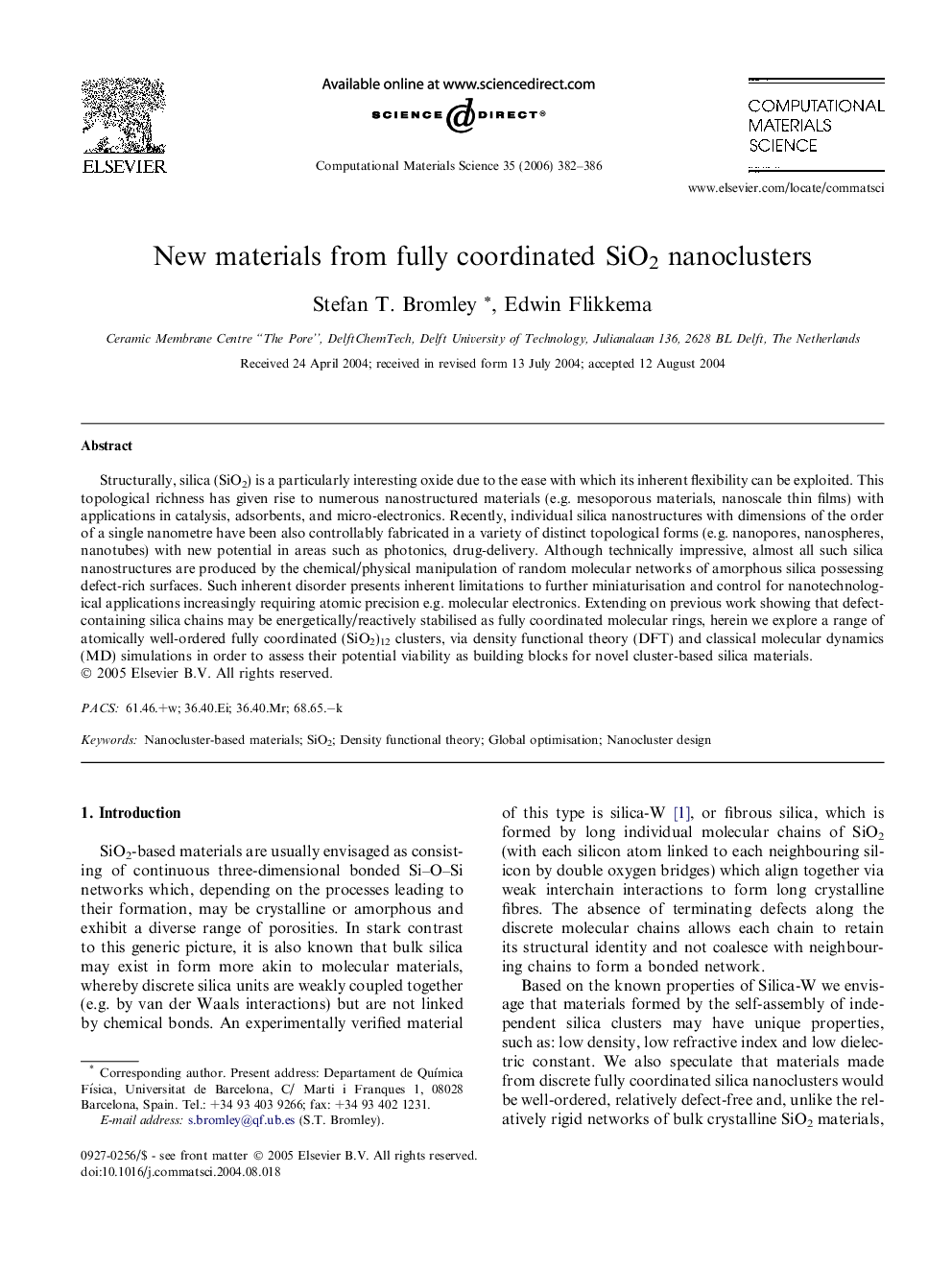| Article ID | Journal | Published Year | Pages | File Type |
|---|---|---|---|---|
| 1564280 | Computational Materials Science | 2006 | 5 Pages |
Structurally, silica (SiO2) is a particularly interesting oxide due to the ease with which its inherent flexibility can be exploited. This topological richness has given rise to numerous nanostructured materials (e.g. mesoporous materials, nanoscale thin films) with applications in catalysis, adsorbents, and micro-electronics. Recently, individual silica nanostructures with dimensions of the order of a single nanometre have been also controllably fabricated in a variety of distinct topological forms (e.g. nanopores, nanospheres, nanotubes) with new potential in areas such as photonics, drug-delivery. Although technically impressive, almost all such silica nanostructures are produced by the chemical/physical manipulation of random molecular networks of amorphous silica possessing defect-rich surfaces. Such inherent disorder presents inherent limitations to further miniaturisation and control for nanotechnological applications increasingly requiring atomic precision e.g. molecular electronics. Extending on previous work showing that defect-containing silica chains may be energetically/reactively stabilised as fully coordinated molecular rings, herein we explore a range of atomically well-ordered fully coordinated (SiO2)12 clusters, via density functional theory (DFT) and classical molecular dynamics (MD) simulations in order to assess their potential viability as building blocks for novel cluster-based silica materials.
